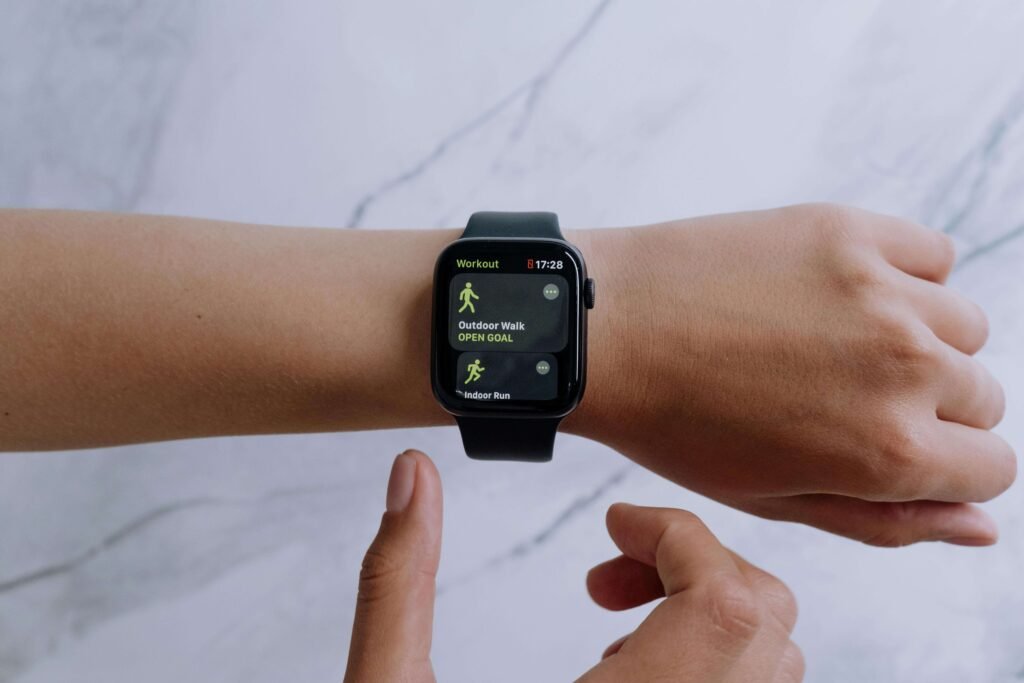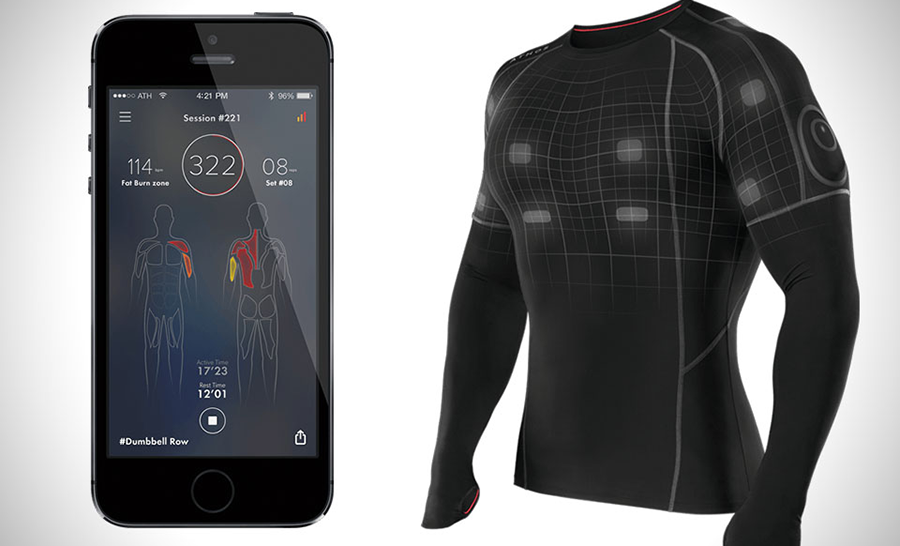Introduction
Wearable health technology has revolutionized how we monitor and manage our health. From tracking fitness levels to providing critical health insights, wearable health monitors are becoming indispensable tools in our daily lives. As technology advances, these devices are becoming more sophisticated, offering a wider range of features and more accurate data. In this blog post, we will delve into the latest innovations in wearable health tech, exploring the most recent devices and their features, and how they are transforming healthcare.
Understanding Wearable Health Technology
Wearable health technology refers to electronic devices that can be worn on the body to monitor various health metrics. These devices include smartwatches, fitness trackers, health rings, and even smart clothing. The evolution of these devices has been remarkable. Initially designed to track basic activities like steps and calories burned, they now offer advanced features such as ECG monitoring, blood oxygen levels, and even sleep analysis.
Benefits of Wearable Health Monitors:
- Continuous Monitoring: Wearable health devices provide real-time health data, allowing for continuous monitoring.
- Early Detection: These devices can help in the early detection of potential health issues by tracking vital signs and alerting users to any anomalies.
- Personalized Insights: Wearable health monitors provide personalized health insights based on individual data, promoting better health management.
- Convenience: They are easy to wear and use, making health monitoring accessible to everyone.
Wearable health technology is not just about convenience; it’s about enhancing the quality of life by providing valuable health insights and promoting proactive health management.
Latest Innovations in Wearable Health Tech
Health Ring Wearables

Health ring wearables are a notable innovation in the realm of wearable health technology. These sleek, compact devices are worn like traditional rings but are equipped with sensors that monitor various health metrics. Popular models, such as the Oura Ring, offer features including heart rate monitoring, sleep analysis, and activity tracking.
Features of Health Ring Wearables:
- Heart Rate Monitoring: Continuous tracking of heart rate throughout the day and night.
- Sleep Analysis: Detailed insights into sleep stages, duration, and quality.
- Activity Tracking: Monitoring physical activity levels, including steps taken and calories burned.
- Temperature Monitoring: Some models track body temperature to provide additional health insights.
Advantages:
- Discreet Design: Unlike bulkier devices, health rings are subtle and stylish.
- Comfort: Lightweight and comfortable for all-day wear.
- Comprehensive Health Data: Provides a wide range of health metrics in one device.
Advanced Smartwatches

Smartwatches continue to be at the forefront of wearable health tech innovations. Brands like Apple, Garmin, and Fitbit have introduced advanced models with enhanced health monitoring capabilities.
Key Features of Advanced Smartwatches:
- ECG Monitoring: Detects irregular heart rhythms and provides electrocardiogram readings.
- Blood Oxygen Monitoring: Measures oxygen saturation levels in the blood.
- Fitness Tracking: Comprehensive tracking of various physical activities and exercise routines.
- Sleep Tracking: Analyzes sleep patterns and provides insights for better sleep quality.
Comparison of Top Brands:
- Apple Watch: Known for its user-friendly interface and robust app ecosystem.
- Garmin: Offers specialized features for athletes and fitness enthusiasts.
- Fitbit: Focuses on overall wellness, including stress management and mindfulness.
Smart Clothing

Smart clothing represents a fusion of technology and fashion, integrating health monitoring capabilities into everyday wear. These garments are embedded with sensors that track various health metrics.
Types of Smart Clothing:
- Smart Shirts: Monitor heart rate, breathing patterns, and posture.
- Smart Socks: Track steps, running efficiency, and foot pressure.
- Smart Leggings: Measure muscle activity and movement patterns.
Integration with Wearable Health Technology:
- Data Syncing: Smart clothing often syncs with apps and other wearable devices for comprehensive health monitoring.
- Comfort and Performance: Designed to be comfortable and enhance athletic performance.
Key Features of Wearable Health Devices
Accuracy and Reliability
One of the most crucial aspects of wearable health monitors is their accuracy and reliability. Accurate health data is essential for making informed decisions about one’s health.
Factors Influencing Accuracy:
- Sensor Quality: High-quality sensors provide more accurate readings.
- Data Algorithms: Advanced algorithms help in processing and interpreting health data accurately.
- Fit and Placement: Proper fit and placement on the body ensure better accuracy.
Battery Life and Charging
Battery life is a significant consideration for users of wearable health monitoring devices. Long battery life ensures that devices can be worn continuously without frequent recharging.
Tips for Extending Battery Life:
- Optimize Settings: Adjust settings to conserve battery, such as reducing screen brightness and turning off unnecessary notifications.
- Regular Charging: Establish a routine for charging the device to prevent it from running out of power.
Fast Charging Features:
- Many modern devices offer fast charging capabilities, allowing users to quickly recharge their devices and resume monitoring.
Comfort and Design
The comfort and design of wearable health monitors are critical for ensuring that users can wear them consistently without discomfort.
Design Considerations:
- Lightweight Materials: Use of lightweight and breathable materials for comfort.
- Adjustable Straps: Ensuring a secure yet comfortable fit.
- Aesthetic Appeal: Modern designs that are stylish and can be worn with any outfit.
Impact on Healthcare
Remote Patient Monitoring
Wearable health devices play a pivotal role in remote patient monitoring, allowing healthcare providers to track patients’ health data in real-time.
Benefits for Patients and Providers:
- Continuous Health Monitoring: Patients can be monitored continuously, leading to early detection of potential health issues.
- Convenience: Reduces the need for frequent in-person visits to healthcare facilities.
- Data-Driven Decisions: Provides healthcare providers with comprehensive data to make informed decisions.
Preventive Health and Early Diagnosis
Wearable health technology is instrumental in preventive health care and early diagnosis of medical conditions.
Examples of Preventive Health Care:
- Heart Health Monitoring: Detecting irregular heart rhythms and other cardiac issues early.
- Sleep Apnea Detection: Identifying signs of sleep apnea and other sleep disorders.
- Chronic Disease Management: Helping in the management of chronic conditions such as diabetes and hypertension.
Data-Driven Personal Health Insights
The data collected by wearable health monitors provides users with personalized health insights, enabling them to take proactive steps towards better health.
Leveraging Health Data:
- Activity Trends: Analyzing activity levels over time to identify patterns and make improvements.
- Health Goals: Setting and tracking health goals based on personalized data.
- Behavioral Changes: Making informed lifestyle changes to improve overall health.
Future Trends in Wearable Health Tech
AI and Machine Learning Integration
The integration of AI and machine learning is set to revolutionize wearable health technology further. These technologies enhance the capabilities of wearable devices by providing more accurate and predictive health insights.
Future Potential:
- Predictive Analytics: AI can predict potential health issues before they occur, allowing for proactive intervention.
- Personalized Recommendations: Machine learning algorithms can offer personalized health recommendations based on user data.
Expansion of Health Metrics Monitored
Research and development in wearable health tech are continually expanding the range of health metrics that can be monitored.
New Health Metrics:
- Hydration Levels: Devices that monitor hydration levels in real-time.
- Glucose Monitoring: Non-invasive methods for continuous glucose monitoring.
- Mental Health Indicators: Tracking stress levels and other mental health indicators.
Conclusion
Wearable health technology is rapidly advancing, offering new and innovative ways to monitor and manage our health. From health rings to advanced smartwatches and smart clothing, the latest devices provide a wealth of features designed to enhance our well-being. As these technologies continue to evolve, they will play an increasingly important role in preventive health care, early diagnosis, and personalized health management. Embracing these innovations can lead to a healthier, more informed, and proactive approach to health and wellness.



